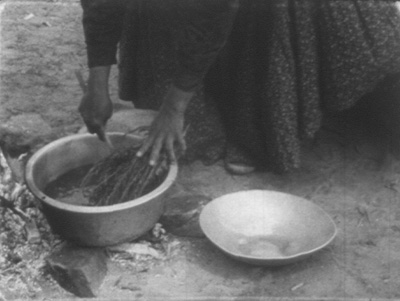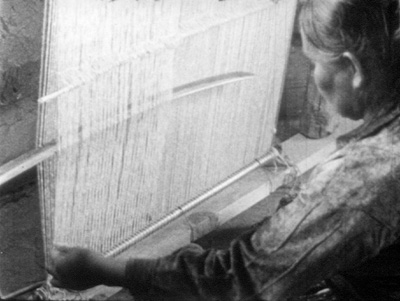

1966, 16 mm, b/w, silent, 22 min.
Made by a Navajo Indian who was given only technical instruction in film and had seen little of existing cinema and television, this is one of the most unique and inspiring documentaries ever made. For decades before the "experiment" that this film was a part of, in which filmmaker Sol Worth and anthropologist John Adair decided to give cameras and film stock to Native Americans to let them document their own lives, filmmakers and anthropologists had been filming tribes in Africa and elsewhere in the styles of Western filmmaking. Worth and Adair wondered if the Navajo, coming from a unique culture, would structure reality differently - and, as it turned out, they did. Filming the process of her own mother weaving blankets, Benally includes the gathering of plants to make dyes and the preparation of the wool as well as the weaving itself, connecting the final products, the blankets, to the natural environment that produced them. Her frequent use of jump cuts may seem jarring or even amateurish at first, but across the length of the film its editing reflects a life lived on the land in which walking was the principal means of transport, and an openness to looking directly at the world that had not yet been deflected and displaced by the mediating influence of movies and television.
Fred Camper
